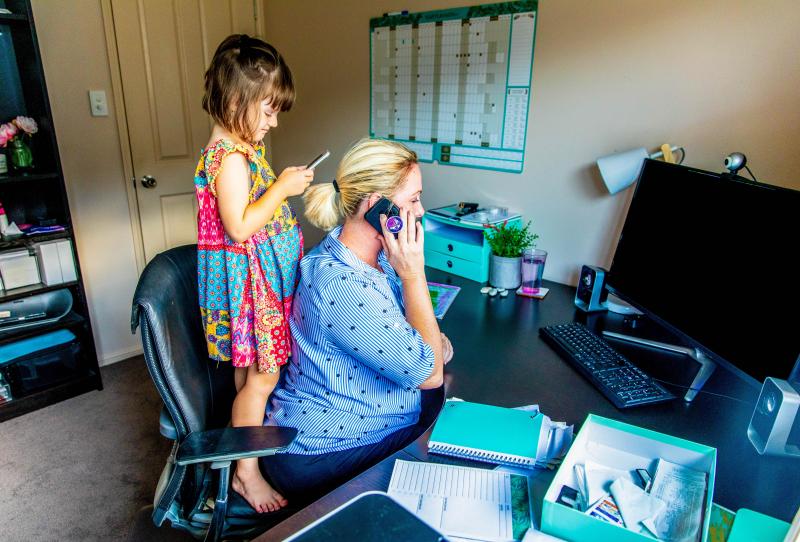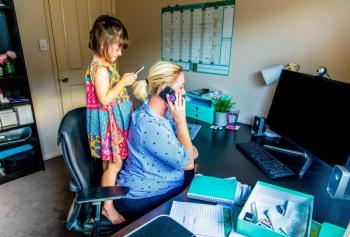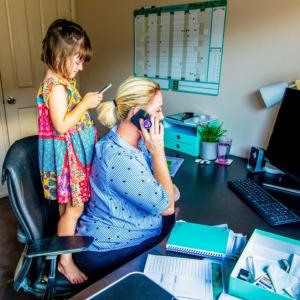How to create a home office to boost well-being and productivity
The COVID-19 pandemic has created opportunities for millions of people around the world to work from home on a temporary basis, and perhaps even a more permanent basis as companies are beginning to realize remote-working employees is not such a negative, as noted by CNBC.
A June survey conducted by professors at Cardiff University and the University of Southampton revealed that 88 percent of employees who worked at home during COVID-19 would like to continue working at home in some capacity, with 47 percent of employees wanting to work at home often or all of the time.
Furthermore, 41 percent of those surveyed said they were able to get as much work done while working at home in June compared to six months earlier when most were working in traditional work settings. Meanwhile, 29 percent reported achieving more work at home, while 30 percent noted their productivity had dipped.
“[Those wanting to work from home after social distancing rules regress] are among the most productive, so preventing them from choosing how they work in the future does not make economic sense,” argued Professor Alan Felstead of Cardiff University and the Wales Institute of Social and Economic Research. “Giving employees flexibility on where they work could be extremely beneficial for companies as they attempt to recover from the impact of COVID-19.”
With many people in the Midcoast currently working from home, and perhaps eyeing the possibility of remote work being more commonplace, what is a healthy workspace at home? How does one maintain health and achieve productivity goals.
At the top of the priority list for shaping your home office is finding a distraction-free spot within your home, and a spot with ample lighting.
“You’ll need lots of outlets nearby, with a bright, well-lit desk,” advises Washington Post advice columnist Heloise. “Experts suggest not only overhead lighting, but also a table lamp for focused lighting. A sunny window can boost spirits, too.”
While pulling your laptop onto your lap in bed or on the couch is tempting, it is better to stick to working at a desk or table to maintain good health.
“The monitor of your computer should be at eye level, and you should be able to type with your elbows right at your side,” Heloise said.
Conform your space to support you body, Carrie Scozzaro of the Pacific Northwest Inlander noted.
“Check your posture — aim for sitting straight up, with your shoulders relaxed and your feet on the floor,” Scozzaro suggested. “Try using pillows to alleviate pressure and offer support while seated. If your work from home requires considerable time sitting at a desk, ergonomic seating should be a consideration. A ‘task’ chair with adjustable positioning for the seat, back and armrests can facilitate better body mechanics.”
Taking strategic pauses will be vital to maintaining a healthy workspace at home, according to Diana Shi of Fast Company, a business magazine.
“It can be tempting to put your head down and continue to grind away for hours, but the brain needs small pockets of respite to do productive work,” Shi said.
Establish an area of your residence exclusively as a work-free zone, Shi recommends, and consider setting up multiple areas as your workspace to break up the day.
“For instance, you could start your morning working through pressing tasks while seated at your kitchen table,” said Shi. “In a few hours, transition to standing upright at a counter or standing desk. After lunch, you may choose to return to working at the table or even outdoors, such as on a porch or sitting in front of an open window.”
Another aspect of the home office to consider is storage spaces, though you may not necessarily have to spend funds on storage.
Repurposing old or unused furniture can be used to organize your paperwork, as highlighted by the Environmental Magazine.
“This can also give your office a cool, chic aesthetic,” the magazine touted.
Transforming rustic or vintage items such as wooden boxes or wine crates are a practical and efficient way, according to the magazine, to organize your new work space.
Your well-being will be shaped by how well you transition to working from home, including how you cope with no longer easily separating your home life from your work life, according to Lauren Howe, Ashley Whillans and Jochen Menges of Harvard Business Review.
The key to balancing your workload while working from home will be identifying tasks more important than others.
“To avoid drowning in work, identify a must win for each day — one thing you need to achieve no matter what — and then pursue it at full steam,” Howe, Whillans and Menges advise. “In the face of constant interruptions from email and messaging platforms, staying focused on your top priority is a real accomplishment. And if you complete your must win, research shows the resulting sense of achievement is likely to have a significant impact on your happiness.”
The research team found commuting to and from work helps to mentally switch gears between their home responsibilities and their work responsibilities. Without that commute, the researchers found people struggle to separate work life from their personal life.
“Without an office to commute to, the separation between work and home becomes tenuous,” Howe, Whillans and Menges outlined. “Although research shows that people rate their commutes as one of the most stressful and undesirable parts of the day, having no commute at all causes problems, too.”
Instead of stepping away from work projects and commuting home, people are working later than ever, the researchers found, and that extra work time is not always yielding productive results.
“In our studies, people reported being stuck in more meetings during the pandemic than before, doing too much ‘agenda-setting, not doing enough creative collaboration, and filling their time with more unproductive work,” Howe, Whillans and Menges said.
To avoid your workday stretching into the late hours of the night, establish a small event that signifies the end of your workday, such as getting a snack, going for a walk, or calling a loved one.
“These daily routines help you celebrate what you have accomplished during the day (rather than focusing on what still needs to be done), bringing life meaning and happiness,” they said.
Howe, Whillans and Menges recommend short, informal social interactions, in person or digital, as well as 10 to 20 minutes of active leisure, to help your well-being and your productivity.
“This isn’t about dedicating two hours to socializing every day, but rather spending 20 minutes catching up with a friend or going for a walk,” they said. “You can even maximize active leisure by combining social time with other pursuits, such as exercising together with a friend. This way you can kill two birds with one stone; plus, involving others in your goals makes it easier to stick to them.”
Event Date
Address
United States
























